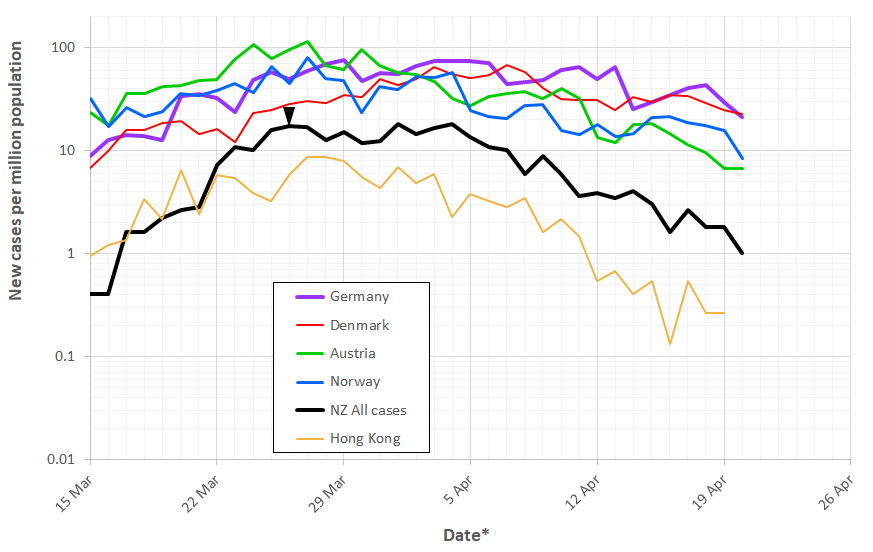frankv:
DS248:
One perhaps more subtle point is that the number of new cases given in the press release each day is made up of cases confirmed over the past two or three days (and sometimes some from even longer ago. The trend vs 'Press Release Date' can give a distorted picture of what is happening; eg over the last four days, the numbers of new cases were: 8, 13, 9, 9. So the 'headline' press release trend looks flat with yesterday's number of new cases one more than the number four days ago. Not so comforting with L3 only six days away.
But when plotted against date of confirmation ('Date of report' in the MOH individual case data), the trend looks quite a bit more positive for the latest four days, with total new cases, 16-19 Apr being: 17, 12, 10, 7*. Note that the last numbers are tentative; data released later today may change them a bit (*eg. possibly add one or two to the last number).
I think you have the dates a bit back to front. I believe the "Date of report" is the date that the person was first identified as a probable case, and given a test. On that day, or probably the day after due to a lag in reporting, they will be included in the "new probable" count. Two or three or more days later their test comes back, and, if positive, they are included in the press release count of "new confirmed cases" that day, even though the actual test was done 2 or 3 days earlier. Their record is then moved from the "Probable" page of the spreadsheet to the "Confirmed" page, but it still retains the same "Date of report". So Mondays and Tuesdays have lower "confirmed" counts than Wednesdays, since they relate to smaller numbers of tests done mostly during the weekend.
I don't know what a "day" means in these reports; I suspect it's probably 9am to 9am, rather than midnight to midnight, since the spreadsheet has a cutoff time of 9am each day.
It would help if they provided clearer definitions of some items, and especially the date. Mind you there is a lot they could do to improve the data, such as split the 70+ age group into at least 70-79, and 80+. And include outcomes; eg. Hospitalised, in Isolation, Recovered, or Deceased similar to Singapore.
However, I very much doubt it is "the date that the person was first identified as a probable case, and given a test" (ie. test date). For example, in the data to 9 am 20 Apr (yesterday's press release) includes 5 confirmed (& 2 probable) cases with a "Date of report" = 19 Apr. There is no way that 5 people were first identified, tested, and confirmed positive (test result back) all on the day before the press release.
Even more so, the data released 9 am on the 16th. That includes 2 confirmed (0 probably) cases with "Date of report" = 16 Apr. That would require those cases to have been first identified, tested, test result back and forwarded to MOH all in the 9 hours to 9 am on the day of the press release, which is basically impossible.
Fairly confident that the "Date of report" here is the date that the on the test lab reports. That is, in the above case the lab reported the result early on the morning of 16 Apr & it may even have gone straight to MOH in these two cases (as well as to the testing organisation). Any in these two cases the reports came in before the 9 am cut off time for the press release on the 16th.




